Anxious Dads and Depressed Moms: Child Disability and the Mental Health of Parents
- PMID: 40210611
- PMCID: PMC12166535
- DOI: 10.1002/hec.4962
Anxious Dads and Depressed Moms: Child Disability and the Mental Health of Parents
Abstract
Having a child with a disability undoubtedly affects parents in many ways, including their well-being. However, the specific mental health trajectories of parents, differentiated by the severity of impairments and parental roles, remain under-explored. We investigate the mental-health effects of having a child with a disability. Using individual-level register data from Sweden, we exploit the epidemiological features of Cerebral Palsy (CP) to estimate causal effects. Results show that prescriptions for mental-health disorders increase after the birth of a child with CP. While fathers are more likely to be dispensed anti-anxiety medications, dispensed medications for anti-depressants increase for mothers. Further, the effects are larger for parents of children with severe impairments but do not differ across parental characteristics. Our findings highlight the need for support and assistance for families with children with disabilities.
Keywords: Sweden; anxiety; cerebral palsy; children; depression; disability; event study; mental health; parental penalty; sleeping disorders.
© 2025 The Author(s). Health Economics published by John Wiley & Sons Ltd.
Conflict of interest statement
The authors declare no conflicts of interest.
Figures





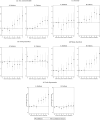
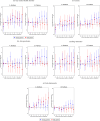

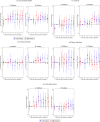

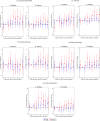
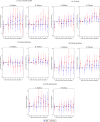

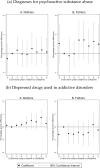

Similar articles
-
Prevalence of depression, anxiety, and substance-related disorders in parents of children with cerebral palsy: a systematic review.Dev Med Child Neurol. 2020 Feb;62(2):163-168. doi: 10.1111/dmcn.14321. Epub 2019 Aug 5. Dev Med Child Neurol. 2020. PMID: 31381150
-
Assessment of Anxiety and Depression in Polish Primary Parental Caregivers of Children with Cerebral Palsy Compared to a Control Group, as well as Identification of Selected Predictors.Int J Environ Res Public Health. 2019 Oct 29;16(21):4173. doi: 10.3390/ijerph16214173. Int J Environ Res Public Health. 2019. PMID: 31671833 Free PMC article.
-
Preschool children of parents who screen positive for mental health problems have an increased risk of subsequent mental disorders: Findings from a longitudinal follow-up study in Sweden.PLoS One. 2025 Mar 12;20(3):e0318971. doi: 10.1371/journal.pone.0318971. eCollection 2025. PLoS One. 2025. PMID: 40072939 Free PMC article.
-
Health-related quality of life, depression, anxiety, and sleep in mothers and fathers of children with dravet syndrome in Sweden.Epilepsy Behav. 2024 Dec;161:110102. doi: 10.1016/j.yebeh.2024.110102. Epub 2024 Oct 30. Epilepsy Behav. 2024. PMID: 39471685
-
Depression and anxiety in parents of children with intellectual and developmental disabilities: A systematic review and meta-analysis.PLoS One. 2019 Jul 30;14(7):e0219888. doi: 10.1371/journal.pone.0219888. eCollection 2019. PLoS One. 2019. PMID: 31361768 Free PMC article.
References
-
- Adhvaryu, A. , Daysal N. M., Gunnsteinsson S., Molina T., and Steingrimsdottir H.. 2023. Child Health, Parental Well‐Being, and the Social Safety Net. Technical report. National Bureau of Economic Research.
-
- Ahammer, A. , Glogowsky U., Halla M., and Hener T.. 2023. “The Parenthood Penalty in Mental Health: Evidence From Austria and Denmark.” IZA Discussion Paper No. 16459. https://docs.iza.org/dp16459.pdf.
-
- Asuman, D. , Gerdtham U.‐G., Alriksson‐Schmidt A. I., Nordin M., and Jarl J.. 2024a. “Child Disability and Parental Labour Market Outcomes: Evidence From Sweden.” Available at SSRN 4760457. 10.2139/ssrn.4760457. - DOI
MeSH terms
Grants and funding
LinkOut - more resources
Full Text Sources
Medical
Miscellaneous

